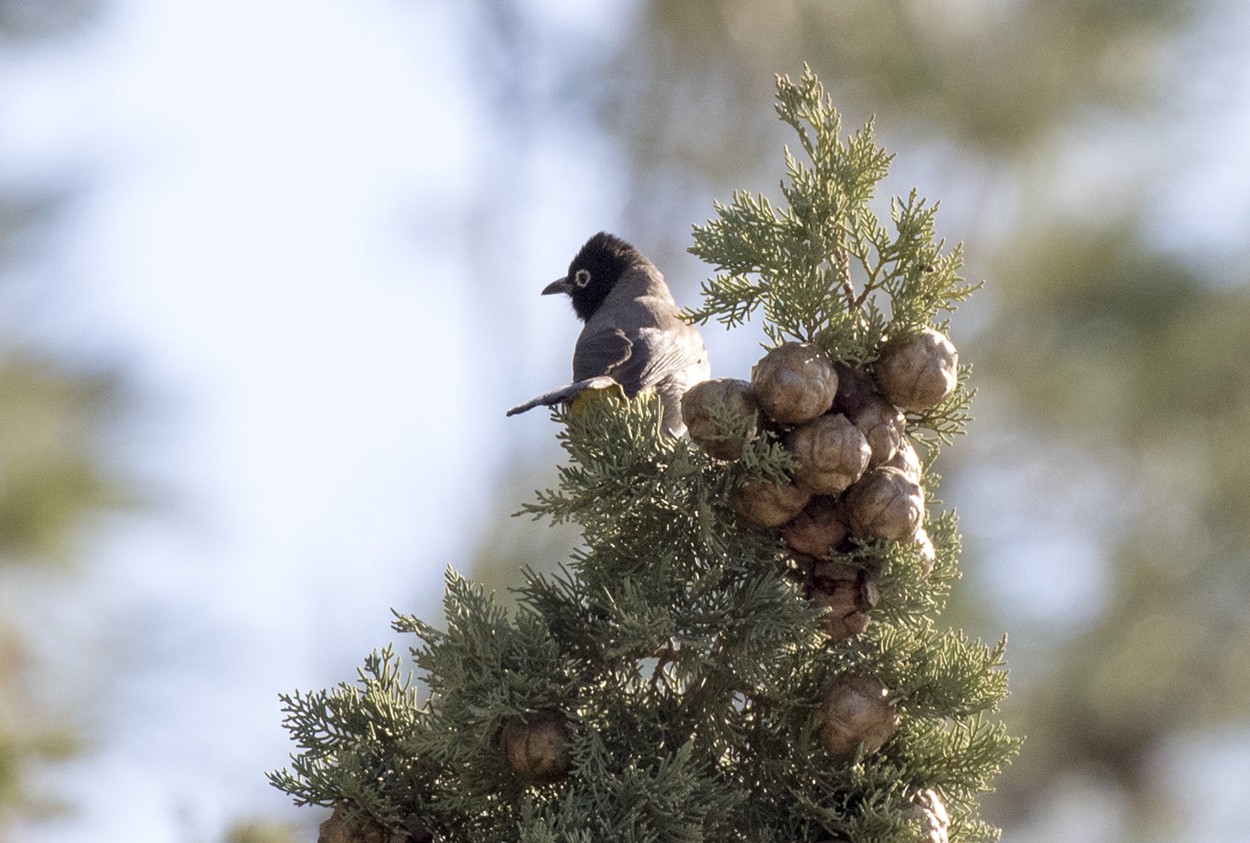White-spectacled Bulbul
A species of Typical Bulbuls, Also known as Arabian Black-capped Bulbul Scientific name : Pycnonotus xanthopygos Genus : Typical Bulbuls
White-spectacled Bulbul, A species of Typical Bulbuls
Also known as:
Arabian Black-capped Bulbul
Botanical name: Pycnonotus xanthopygos
Genus: Typical Bulbuls
Content
Description People often ask General Info
 Photo By Zeynel Cebeci , used under CC-BY-SA-4.0 /Cropped and compressed from original
Photo By Zeynel Cebeci , used under CC-BY-SA-4.0 /Cropped and compressed from original Description
The white-spectacled bulbul (Pycnonotus xanthopygos) is a member of the bulbul family. It is 20–25 cm (7.9–9.8 in) in length with a wingspan of 20–25 cm (7.9–9.8 in). These birds live in fruit plantations, gardens, and cities. It is the most common member of the bulbul family in Israel and Lebanon. In Turkey, it is mainly found in the coastal Mediterranean region, but its range extends from Patara/Gelemiş near Kaş in the west to Türkoğlu in the east. Breeding populations are found from Central and Southern Turkey to Western Syria, Lebanon, Western Jordan, Israel, Sinai and western, central and southern Arabia. Both sexes are similar; juveniles have a browner hood and less obvious eye-rings than the adults. The nest – a small cup of thin twigs, grass stems, leaves and moss – is generally located in bushes and lined with hair, shredded bark and small roots. 
Size
19 cm
Colors
Brown
Black
Yellow
Gray
Life Expectancy
8 years
Nest Placement
Shrub
Feeding Habits
White-spectacled Bulbul consumes a varied diet of fruits, seeds, and insects, sometimes supplemented with leaves, flowers, and nectar. Its feeding behavior includes active foraging. Notably, it exhibits dietary adaptations for a diverse plant-based diet plus insectivory.
Habitat
White-spectacled Bulbul thrive in a variety of well-vegetated habitats, including open woodlands of pine and juniper, scrublands, and lush wadi beds. They are also common in human-altered landscapes such as orchards, gardens, city parks, and agricultural fields. These birds are adaptable to elevation, ranging from sea level to high altitudes in certain geographical regions. Their habitat preference extends across a broad spectrum from semi-desert areas to oases, underscoring their versatility in different environments.
Dite type
Omnivorous
People often ask
General Info
Feeding Habits
Bird food type
Species Status
Not globally threatened.
Scientific Classification
Phylum
Chordates Class
Birds Order
Perching birds Family
Bulbuls Genus
Typical Bulbuls Species
White-spectacled Bulbul